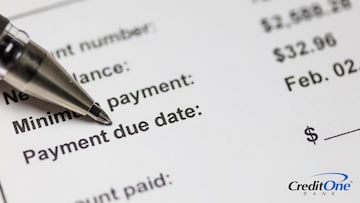
What Is a Grace Period on a Credit Card?
January 23, 2024
Topics:
Credit CardIf your credit card has a grace period, you can avoid paying interest on purchases by being strategic on timing. Here’s how to take advantage.

Introduction
The Credit Card Accountability Responsibility and Disclosure Act of 2009 — better known by the apt acronym, Credit CARD Act — put certain conditions in place to protect consumers.
For example, according to Section 163 (Timing of Payments):
“A creditor may not treat a payment on an open end consumer credit plan as late for any purpose, unless the creditor has adopted reasonable procedures designed to ensure that each periodic statement including the information required by section 127(b) is mailed or delivered to the consumer not later than 21 days before the payment due date.”
So what does that mean? It says that you, as a cardholder, have at least 21 days to submit your payment after your billing cycle ends and your statement is made available to you — which is known as your statement closing date.
For example, if your statement closes on the last day of the month, and your bill is available that day, your payment due date can’t be sooner than the 21st of the following month. That’s the law. This doesn’t mean you can’t pay it sooner — you absolutely can pay your credit card early, and it’s a great idea to do that. But if you don’t, your credit card issuer can’t count it as late until at least 21 days have passed without receiving at least the minimum amount due.
What Is a Grace Period on a Credit Card?
A grace period is a span of time when you won’t be charged interest on new credit card purchases, as long as a few conditions are met. Many credit card issuers offer a grace period to cardmembers, but it’s not a requirement, so some creditors don’t.
In order to take advantage of a grace period, there are two conditions that you typically need to meet:
You must pay your full balance owed by the payment due date. Not just the minimum payment. So if you have a grace period, and you charge $300 to your card and then pay the whole $300 before the due date, you won’t be charged interest on those purchases. But if you only make a partial payment, you’ll be charged interest on the remaining balance.
You must not have an outstanding balance at the beginning of your billing cycle. Grace periods only apply to new purchases, not previous balances. But in addition to that, you might actually lose your grace period if you already have a balance. So if you have a $100 balance from the previous billing cycle, and make $200 worth of purchases, you’d have the same $300 balance as in the previous scenario. But this time, paying the full $300 before your due date probably won’t prevent you from being charged interest. You’ll likely be charged on both the $100 and the $200, because chances are you lost the grace period on new purchases by not paying off the previous purchases. Again, this isn’t written in stone, but it’s pretty common practice.
So you need to pay your full balance, on time and every time, if you want to qualify for a grace period. And that’s only if your credit card issuer offers a grace period in the first place. Once you’ve paid off your balance, you will often get any prior grace periods reinstated, but it sometimes takes a few months. Then you just need to keep zeroing out your balance each month to continue taking advantage.
How Long Is the Grace Period on a Credit Card?
If you have a grace period, it has to be at least 21 days. It’s the same 21 days we talked about, which comes between your statement closing date and payment due date. Some credit cards might offer a longer grace period, but it will never be shorter because 21 days is the minimum.
Keep in mind that you still could have a 0-day grace period if your creditor doesn’t offer one. You still have at least 21 days to make your payment without late fees, but you might be racking up interest during that time.
How To Avoid Credit Card Interest
Having a grace period on your credit card essentially means you can make interest-free purchases with it. So you can take advantage of the convenience and other benefits of a credit card, like payment protection and potential rewards, without giving a second thought to the published annual percentage rate (APR). As long as you keep paying your full balance owed, on time (or early) every month, you don’t have to pay interest. And that power is in your own hands.
Having a grace period doesn’t mean your credit card is free. You might still have fees associated with it, including an annual fee. But it does mean that if you keep paying off the full amount by the due date, you can expect to not pay any interest for using that credit card — at least on purchases.
Other charges to your card might not qualify for a grace period. For example, a cash advance from your card may not have a grace period, and also could be subject to a higher interest rate and other fees that don’t apply to a regular credit card purchase.
Also, if you do a balance transfer from one credit card to another to take advantage of a lower interest rate, you may lose the grace period on the new card. After all, a balance is a balance, so you’ll pay the interest on that transfer amount until you pay it off. And while the promotional APR might look extremely attractive, you’ll probably still be charged the regular interest rate on any new purchases, and that rate might be higher than the balance transfer rate. The one bright spot here is that any payment you make above the minimum has to be applied to the higher-interest balance first, which is again thanks to the CARD Act.
How Do You Know If Your Credit Card Has a Grace Period?
Since it’s not required by law, you can’t just assume that you have a grace period on your credit card. One way to find out is to do an experiment. If you have a zero balance at the beginning of your billing cycle, buy some things and then pay your card balance in full by the due date, but you’re still charged interest on those purchases, then your credit card does not have a grace period.
But you don’t have to wait until that happens. Credit card issuers are required to disclose the period that purchases may be repaid without incurring any finance charges. They put this in an easy-to-read, highly visible section of their cardholder agreement called a Schumer box. So, you can find out whether a credit card offers a grace period before even applying.
When you check the terms and conditions page, look for the section called “How to Avoid Paying Interest on Purchases.” You should see something along the lines of this: “Your due date is at least 24 days after the close of each billing cycle. We will not charge you any interest on Purchases if you pay your entire balance by the due date each month.” If that section isn’t included, then the card doesn’t have a grace period.
How To Make the Most of Your Grace Period
Being strategic is the best way to get ahead in the financial world. By taking advantage of a credit card’s grace period, you can use the card to finance purchases in the short term without incurring any interest charges. How long that term is depends on when you make the charge.
For example, if you make a $100 purchase on the first day of your billing cycle, you technically wouldn’t have to pay that purchase back for over 50 days (30 days of the billing cycle + 21 days until the payment is due) and still not be charged interest, as long as you pay the entire balance due.
So if you use a credit card with a grace period strategically, you can spread out your purchases and still get items you want or need interest-free. You just have to make sure you pay your balance in full each and every month.
Bottom Line
Some credit cards have grace periods where you don’t get charged interest on new purchases, as long as you zero out your balance each month by paying in full before the due date. Carrying a balance from month to month will likely negate your grace period, and you’ll end up being charged interest until you can pay down your debt again.
Knowing how grace periods work and how to find out if a card has one can go a long way toward optimizing your financial habits. If you’re looking for a new card that may have a grace period, see if you pre-qualify for one from Credit One Bank. It takes less than a minute and won’t harm your credit score.
Heather is an accomplished writer and editor in the financial and business industries, with expertise in credit building, investments, cryptocurrency, entrepreneurship, and thought leadership. She loves investigating and pulling apart complicated topics to make them simple, engaging, and easy to understand. But she also enjoys writing about the personal side of life, including self-help, creativity, relationships, families, and pets. She approaches everything from a yin-yang perspective, so her passion for wordplay and metaphors is always balanced with an intense focus on accuracy. Heather has a BFA in Visual Arts from York University, and has worked as a journalist in all media: TV, radio, print, and online.



